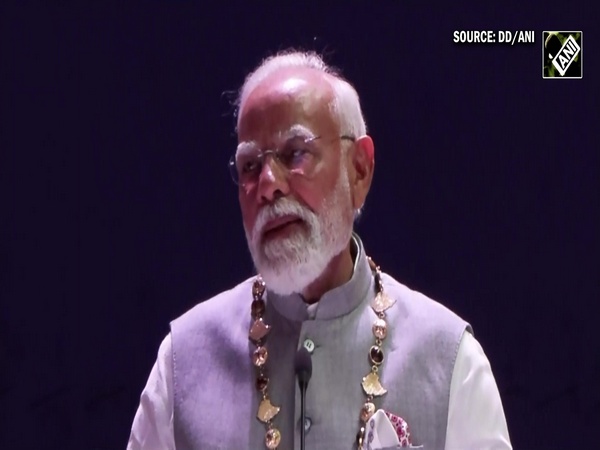At COP 26, India likely to emphasise lessening carbon emissions amid climate change
Oct 30, 2021

New Delhi [India], October 30 : India is likely to emphasise lessening carbon emissions at the upcoming the Conference of the Parties (COP 26) in Glasgow.
COP-26 will be held from October 31 to November 12 in Glasgow under the Presidency of the UK partnering with Italy. The high-level segment of COP-26 titled the World Leaders' Summit (WLS).
In COP 26, New Delhi is likely to pitch high on lessening carbon emissions, the Union Ministry of Environment sources had said last week.
Prime Minister Narendra Modi -- who is in Rome -- will travel to Glasgow to attend the World Leader's Summit of the COP-26 to the United Nations Framework Convention on Climate Change (UNFCCC), at the invitation of the Prime Minister of the UK, Boris Johnson.
PM Modi last attended the COP-21 in Paris in 2015, when the Paris Agreement was concluded, and whose implementation commences this year.
The Ministry of Environment, Forest and Climate Change in recent time held several bilateral meetings with other countries.
"India historically stands at 4.5 per cent total emissions and to make it actually work, developed countries should do it before 2050. There should be a compensation mechanism and the expenditure should be brought by the developed nations," Ministry sources had told ANI.
When it comes to carbon emission, China emits 8.4 tons per person whereas the US emits 18.6 tons per person. The European Union emits 7.16 tons.
The COP-26 will be attended by heads of State/Government of more than 120 countries. COP-26 was originally slated to be held in 2020 but was deferred to 2021 in view of the Covid-19 pandemic.
The UNFCCC embodies the global will and vision to combat climate change. The periodic Conference of Parties to this Convention have emerged as global climate summits, providing an opportunity for stocktaking and for charting the way forward.
"India is taking ambitious actions in energy efficiency measures, biofuels, sustainable transport, e-vehicles, enhancing green cover and sustainable agriculture," Minister of Environment, Forest and Climate Change, Bhupender Yadav, said during a virtual high-level climate meeting convened by the President of the 76th UNGA on Tuesday.
He also mentioned that India took the initiative of the National Hydrogen Mission for the generation and export of green hydrogen.
"We have reduced our emission intensity of GDP by 24 per cent between 2005 and 2016, thereby achieving our pre-2020 voluntary target. Our 2030 targets under the Paris Agreement are considered ambitious and compatible with the Paris Agreement goals. We are on the path to achieving those targets," the minister said, according to an official release.
Underlining that India has set out an ambitious target of 450 GW of renewable energy by 2030, Yadav said that it may be noted that currently, "we have 389 GW total installed capacity. We have already achieved 155 GW of non-fossil fuel installed capacity as of now. We are accelerating action and we are confident to achieve this ambitious target by 2030."
At COP-26, the Parties will work to achieve the completion of Paris Agreement implementation guidelines; the mobilization of climate finance; actions to strengthen climate adaptation, technology development and transfer; and keeping in reach the Paris Agreement goals of limiting the rise in global temperatures.
Prime Minister will hold numerous bilateral meetings on the sidelines of COP-26, including with the Prime Minister of the UK, Boris Johnson.
A new report by the UN Environment Programme (UNEP) has warned that The present commitments to cut greenhouse gas emissions will still put the planet on track for an average 2.7 degrees Celsius temperature.
The Emissions Gap Report 2021 shows that updated Nationally Determined Contributions (NDCs) - the efforts by each country to reduce national emissions, as well as other commitments made for 2030 but not yet officially submitted - would only lead to an additional 7.5 per cent reduction in annual greenhouse emissions in 2030, compared to previous commitments.
According to the agency, the world needs a 55 per cent reduction to limit global temperature increase below 1.5°C, the capstone defined by scientists as the less risky scenery for our planet and humanity's future.



















